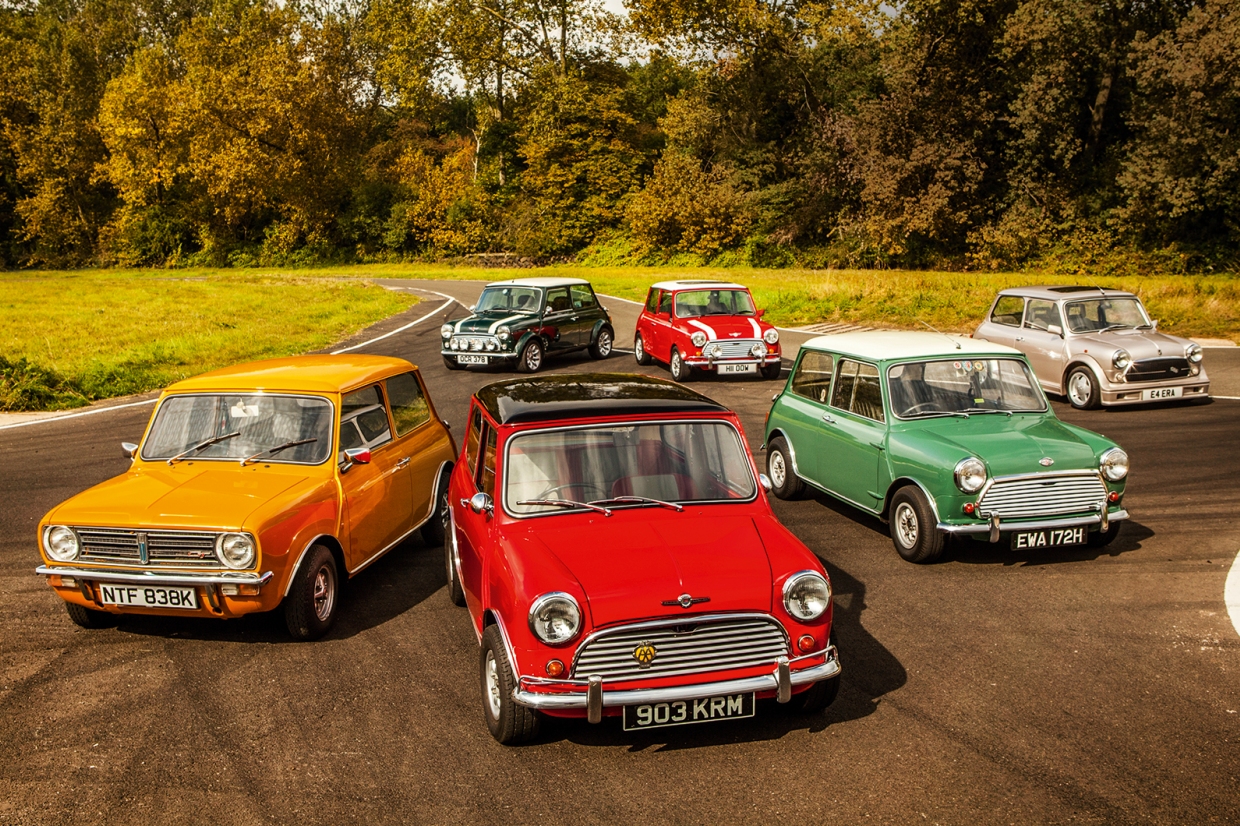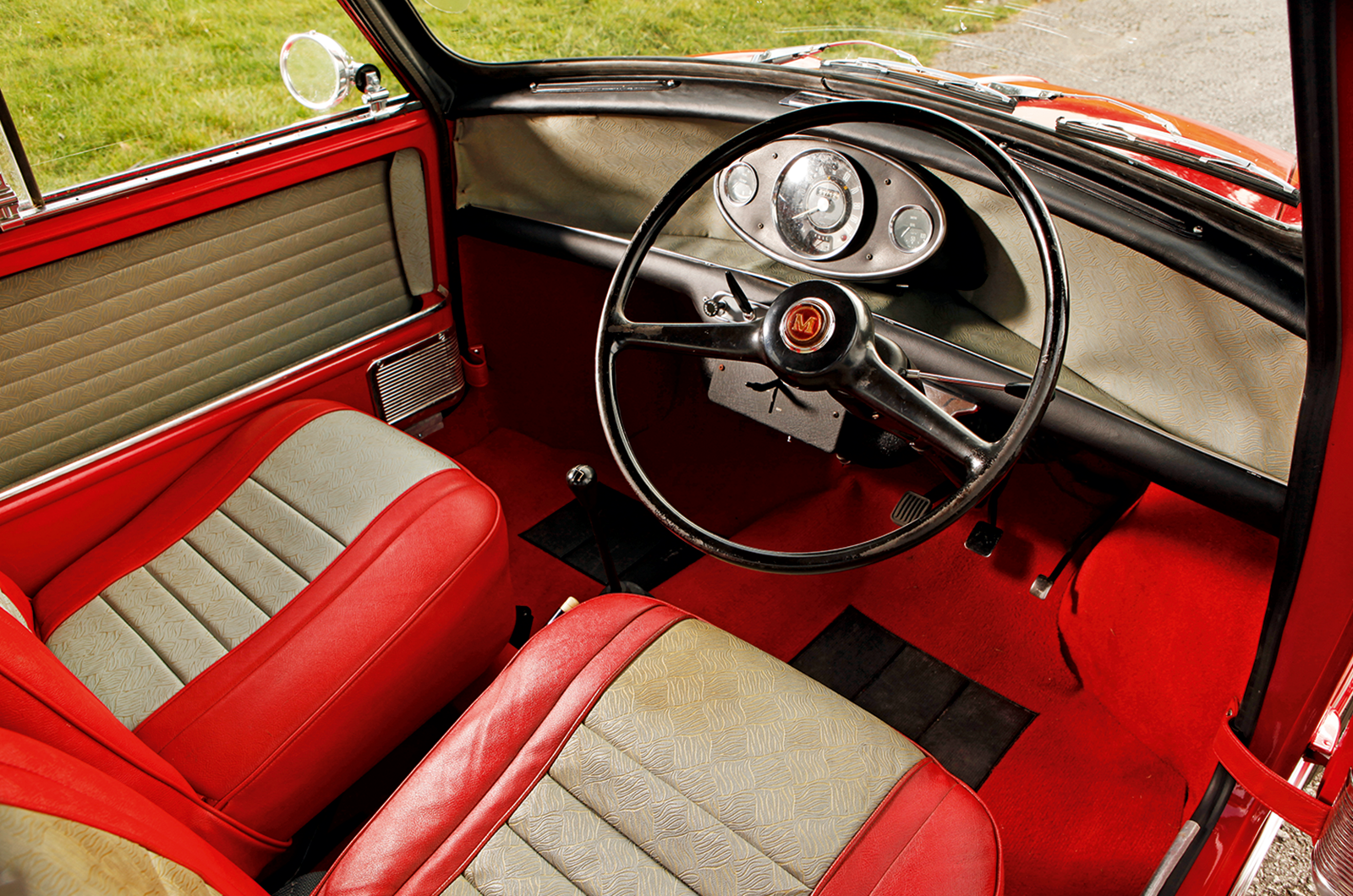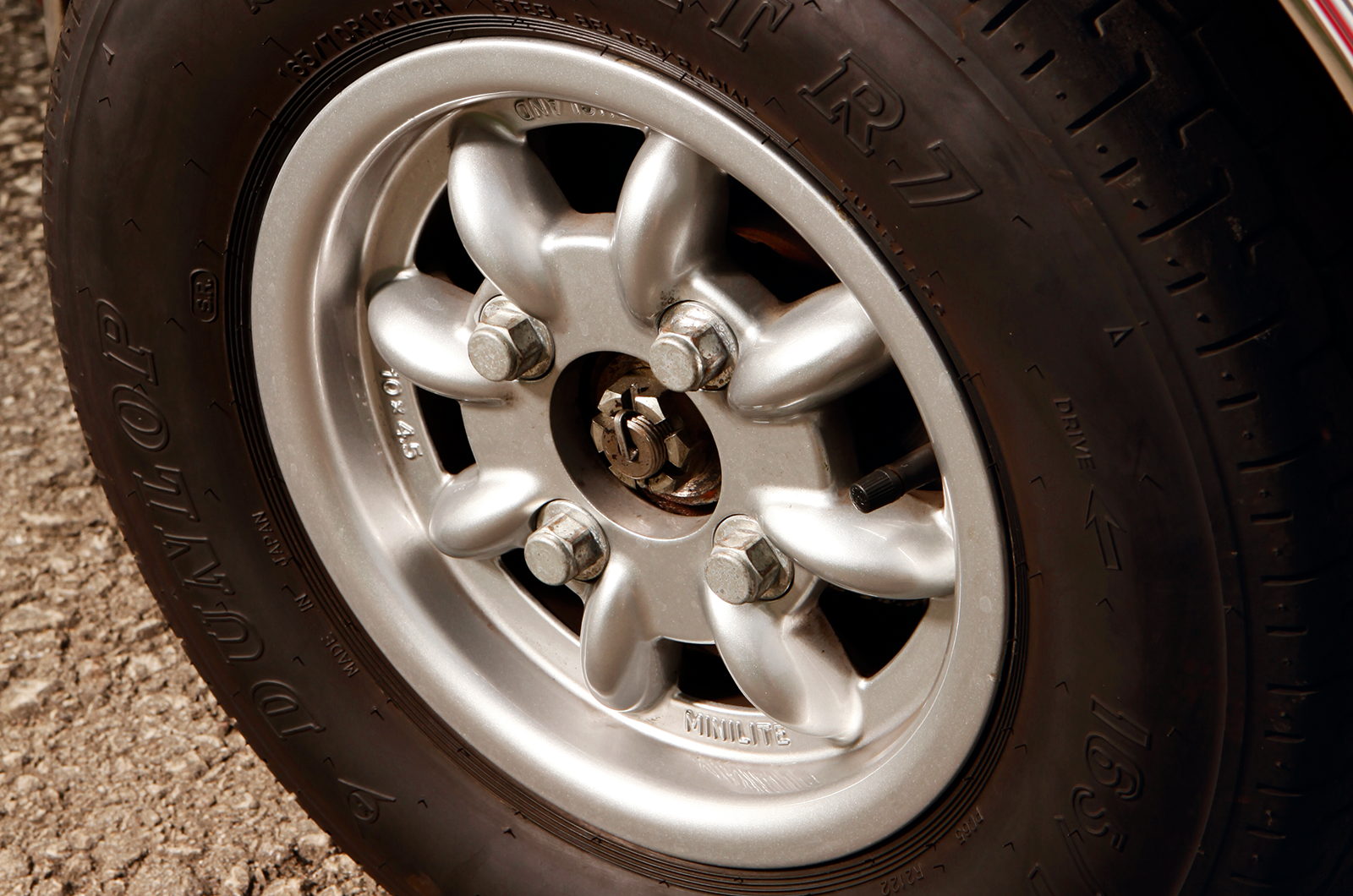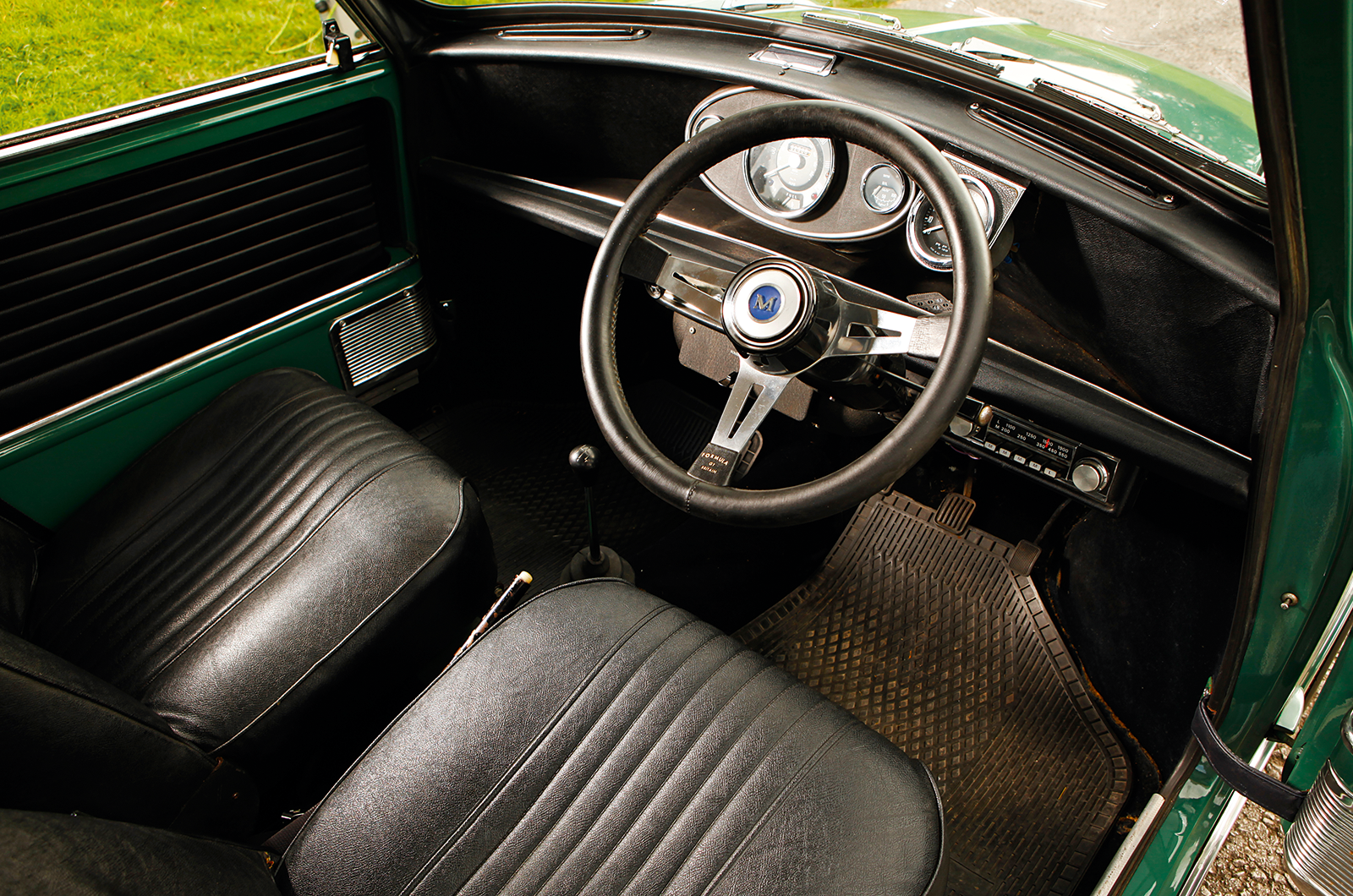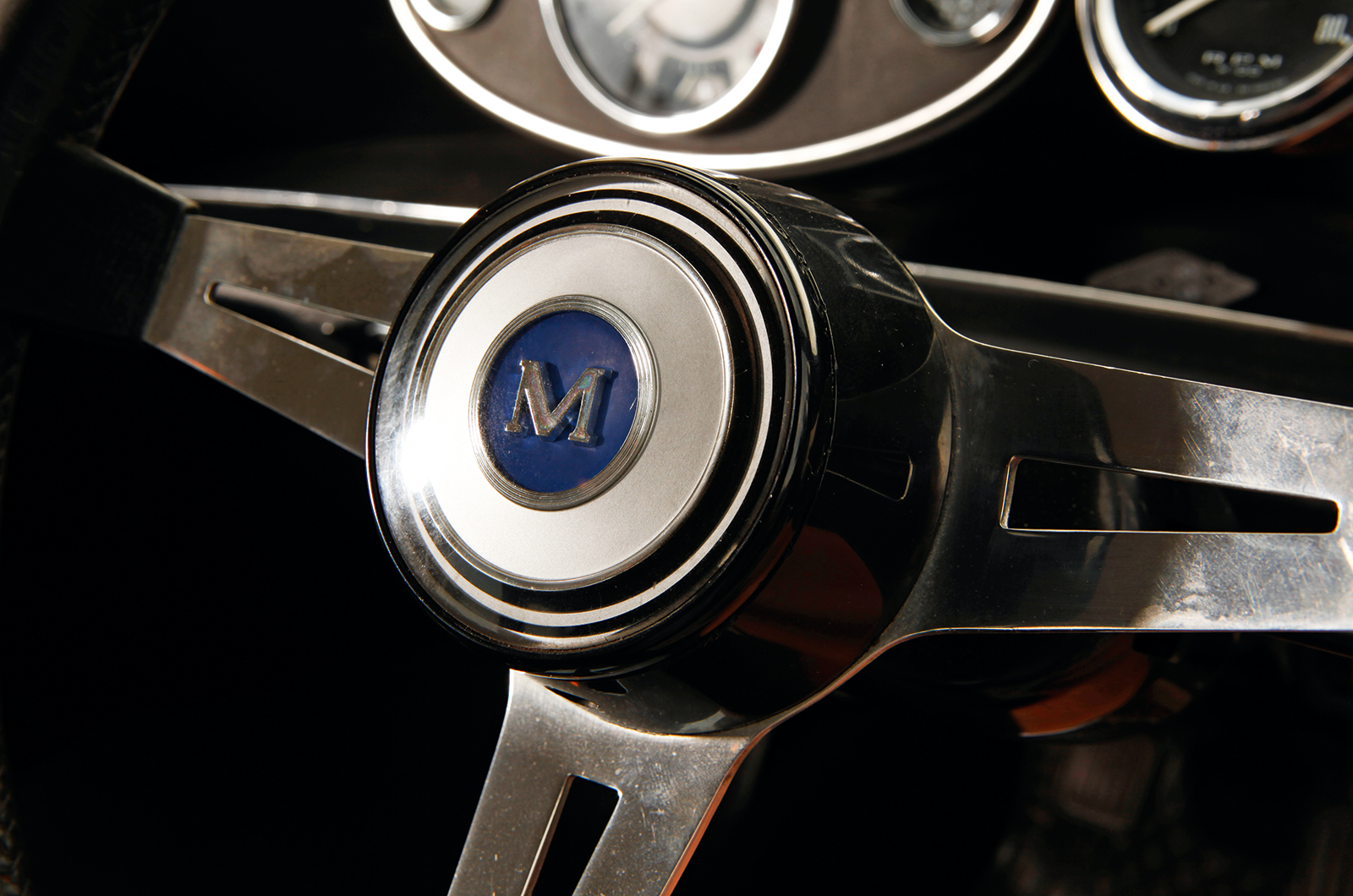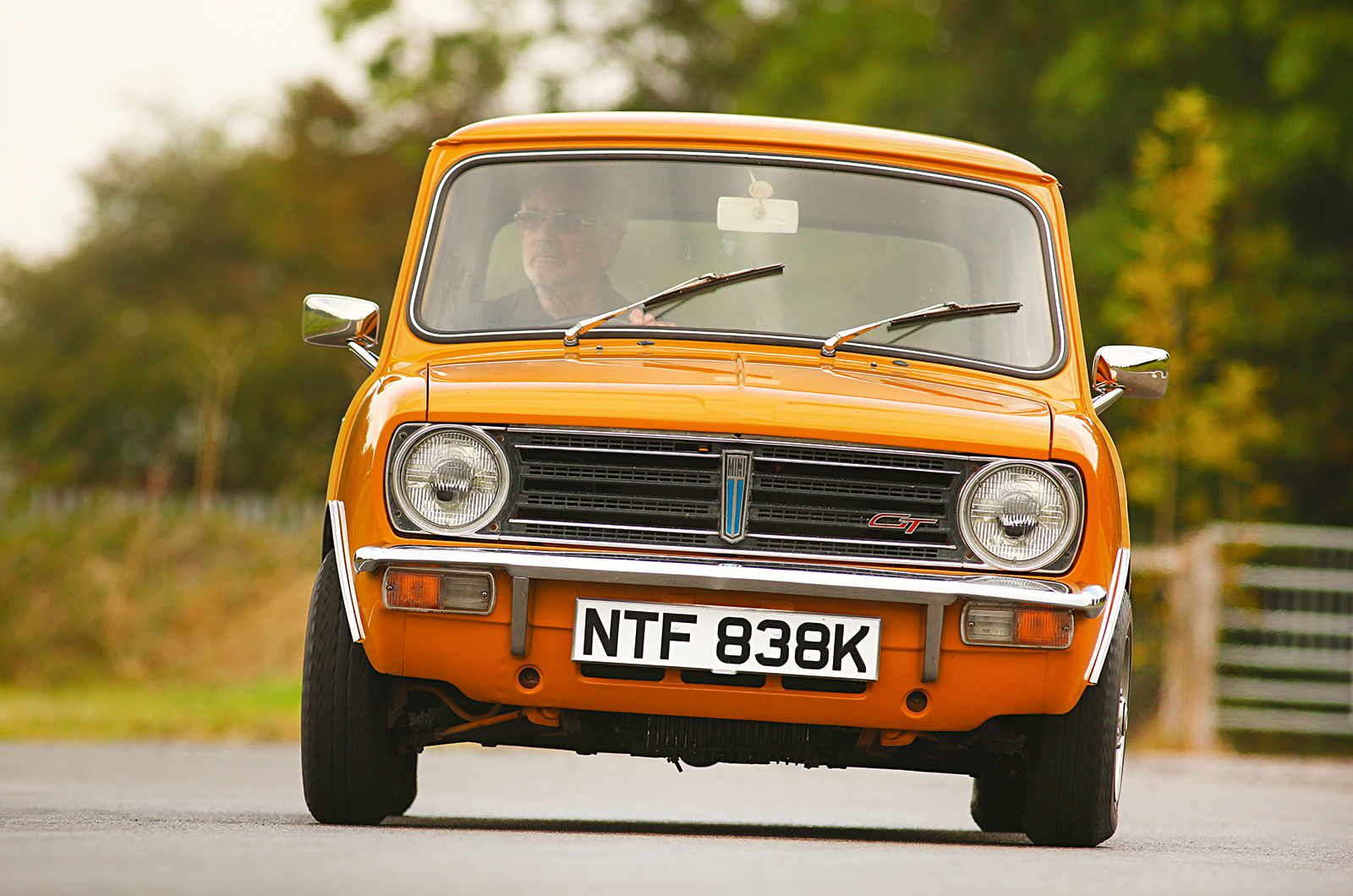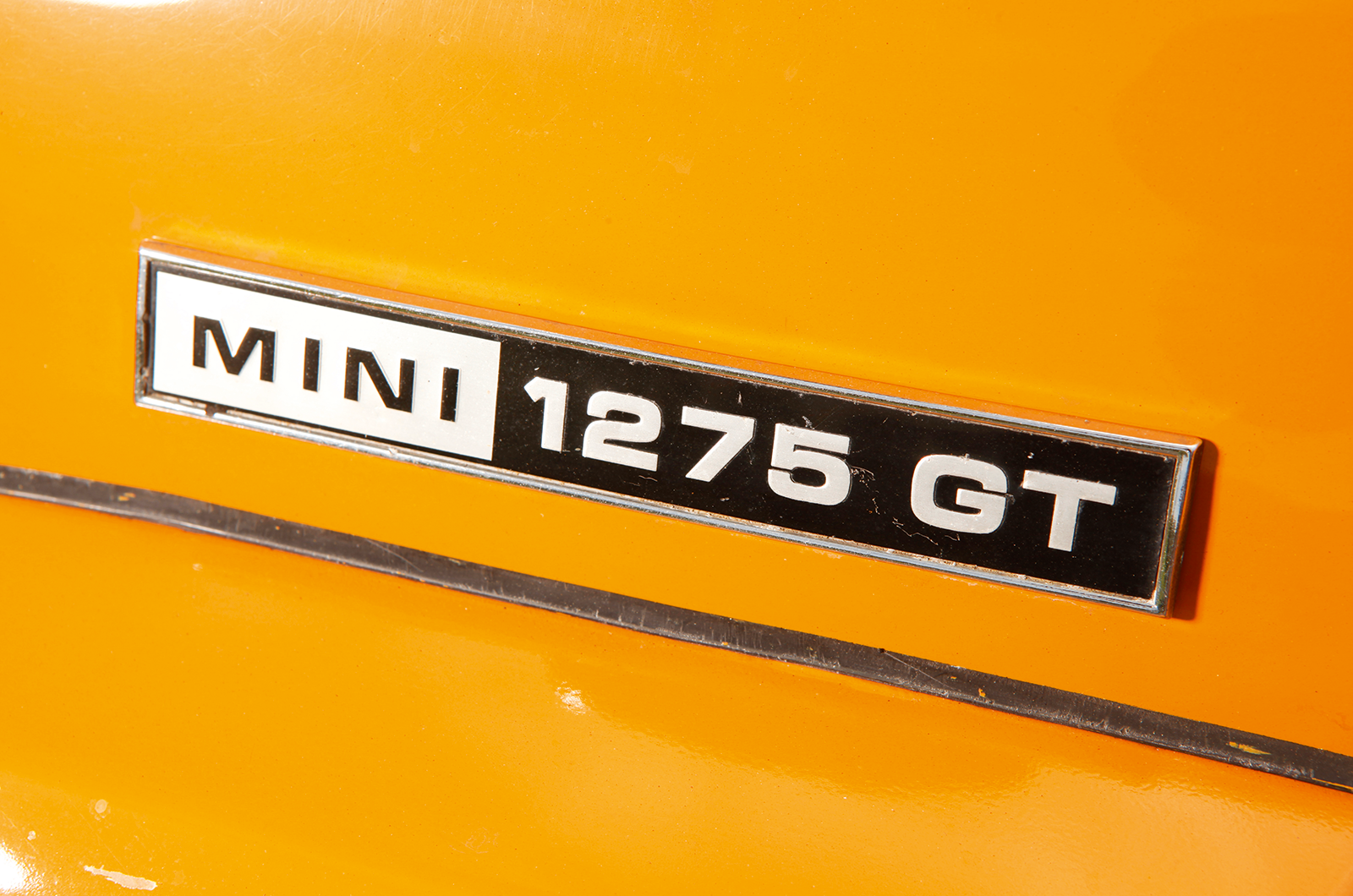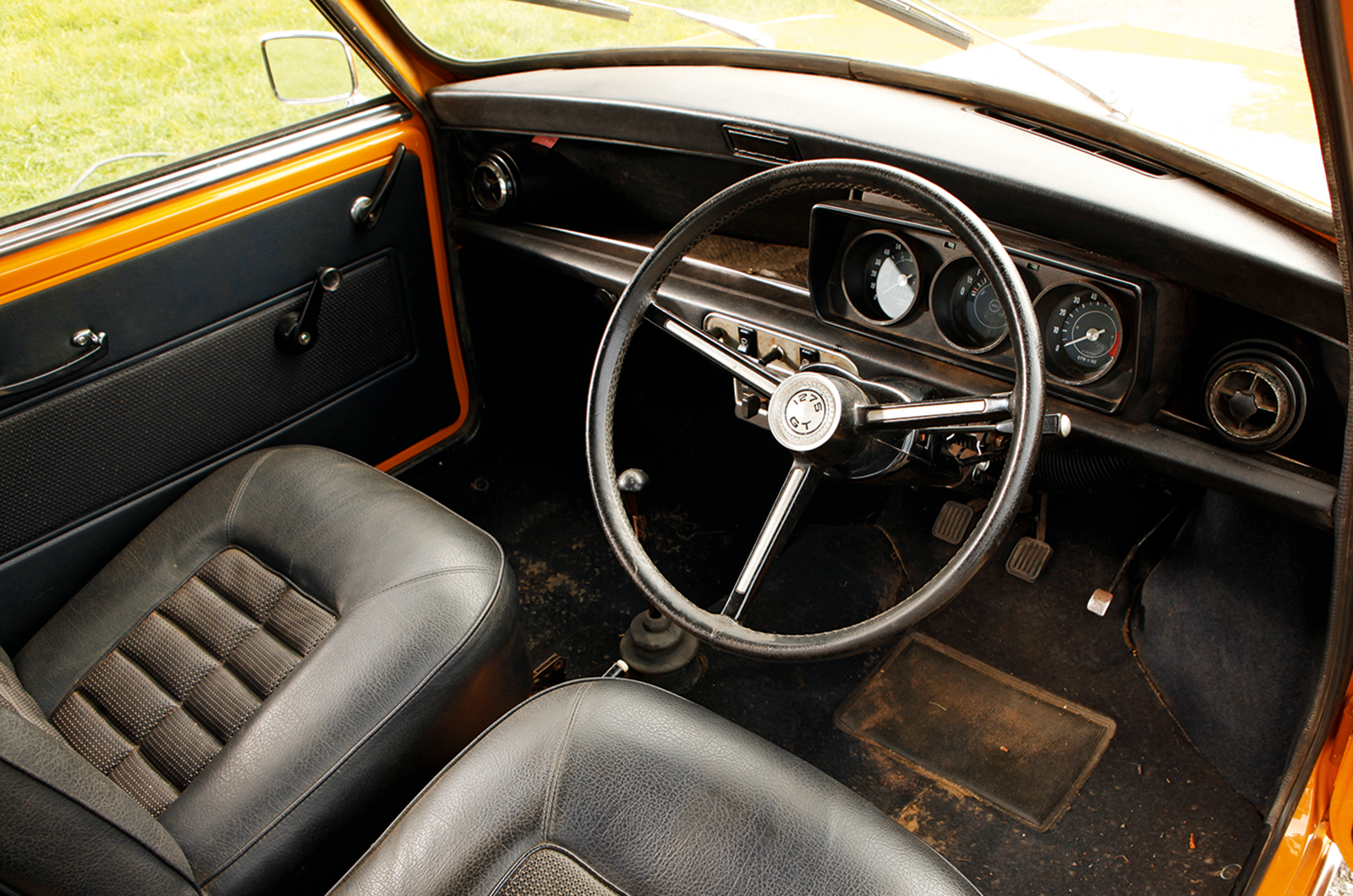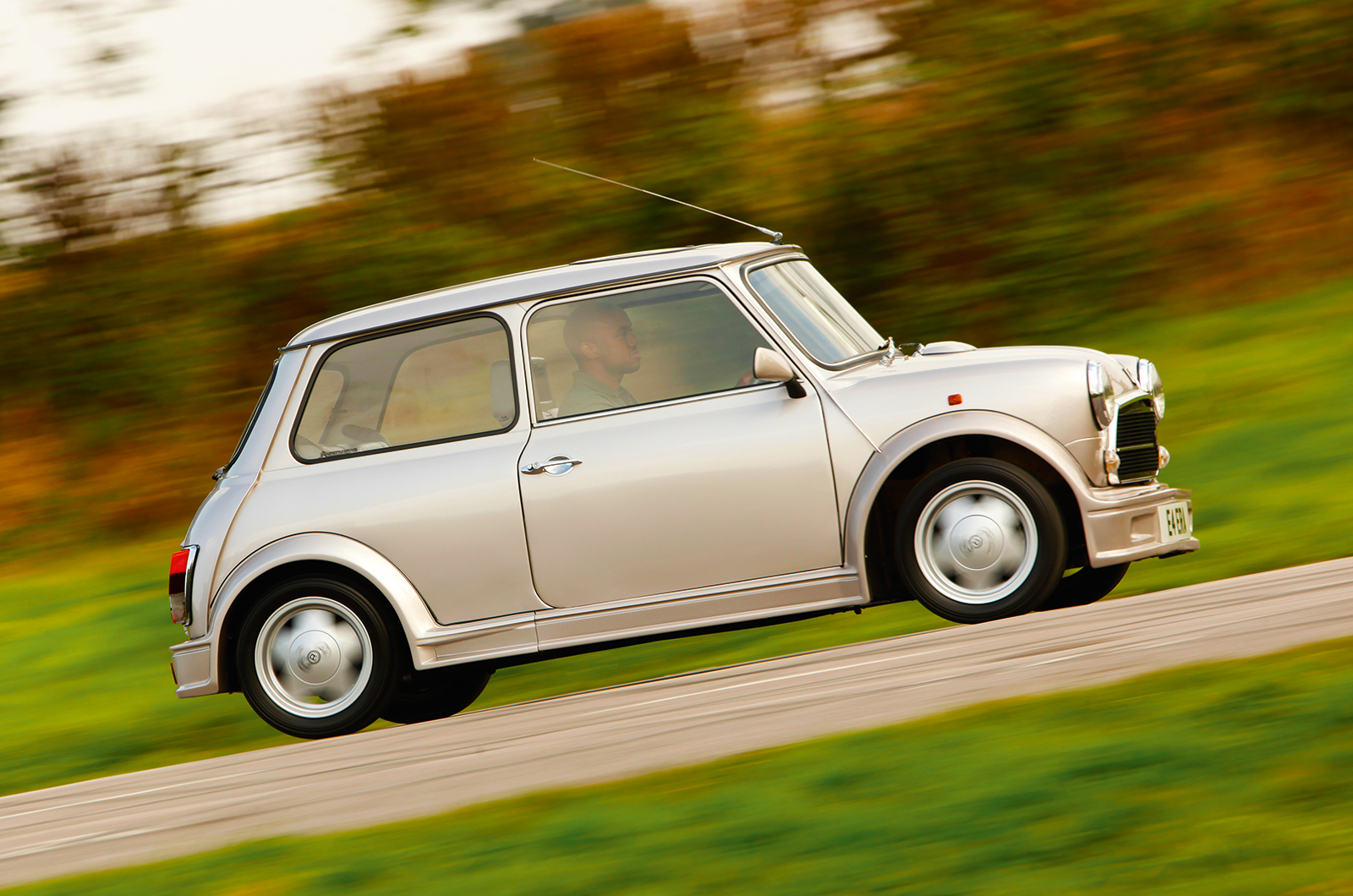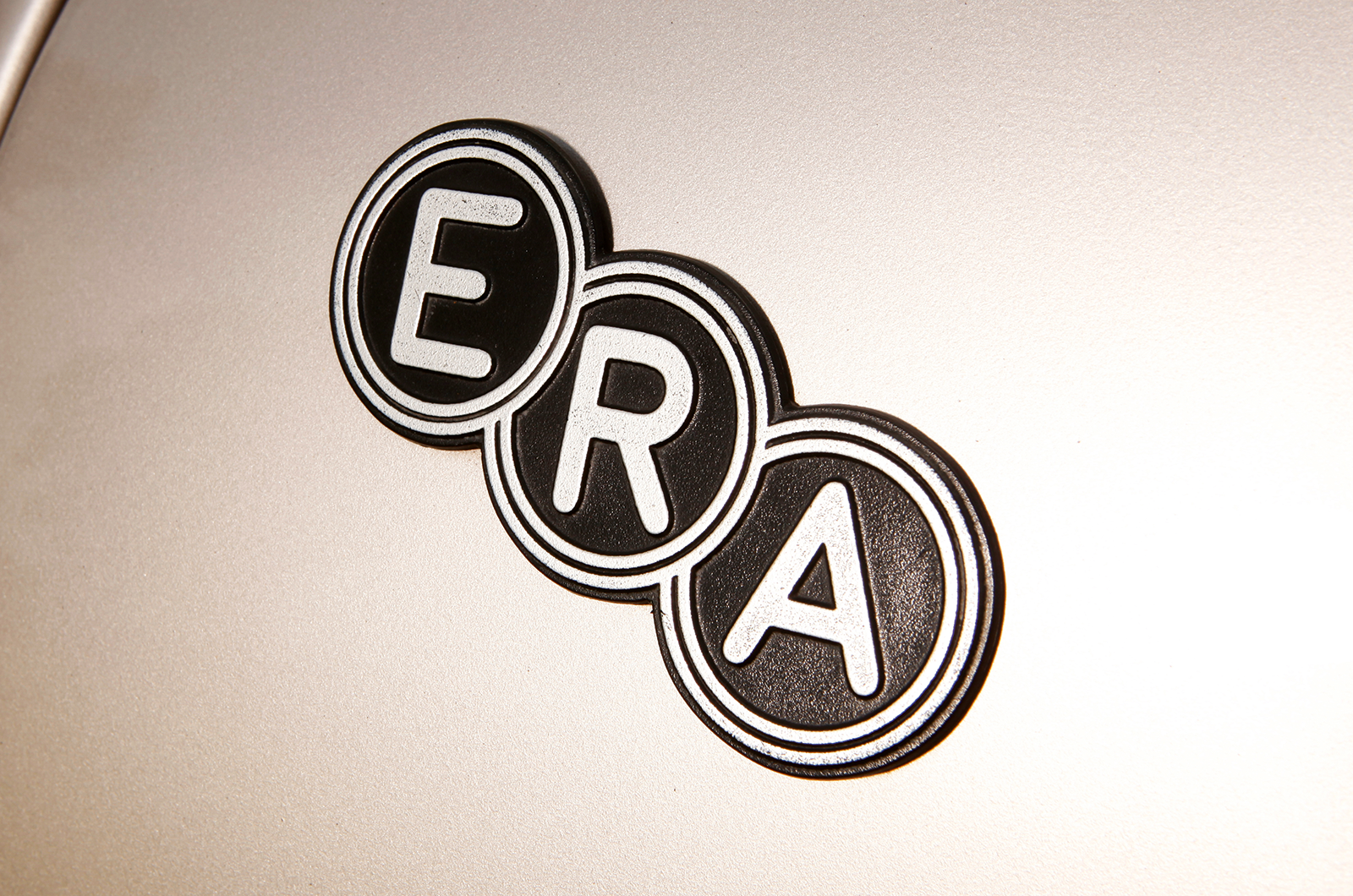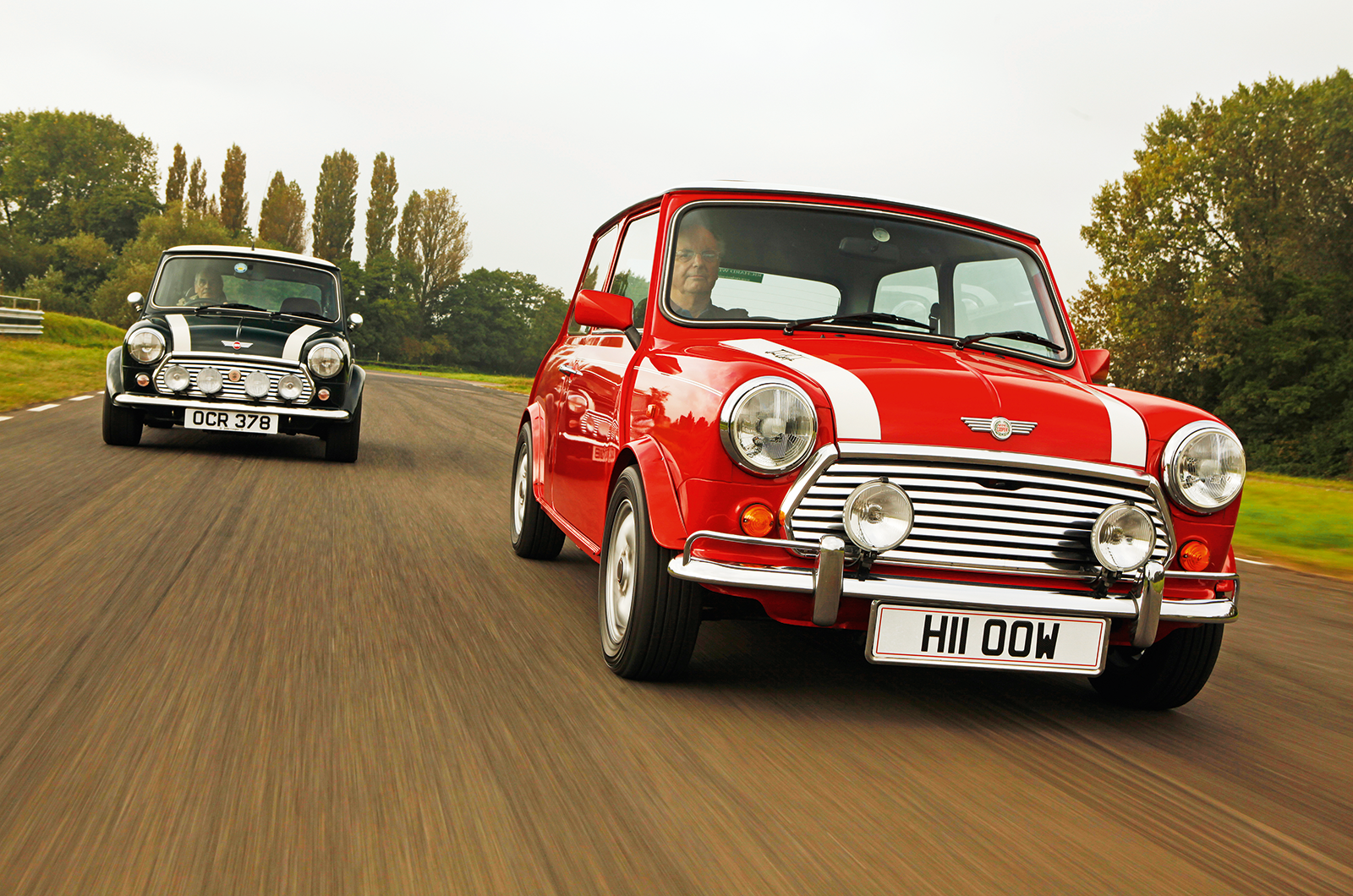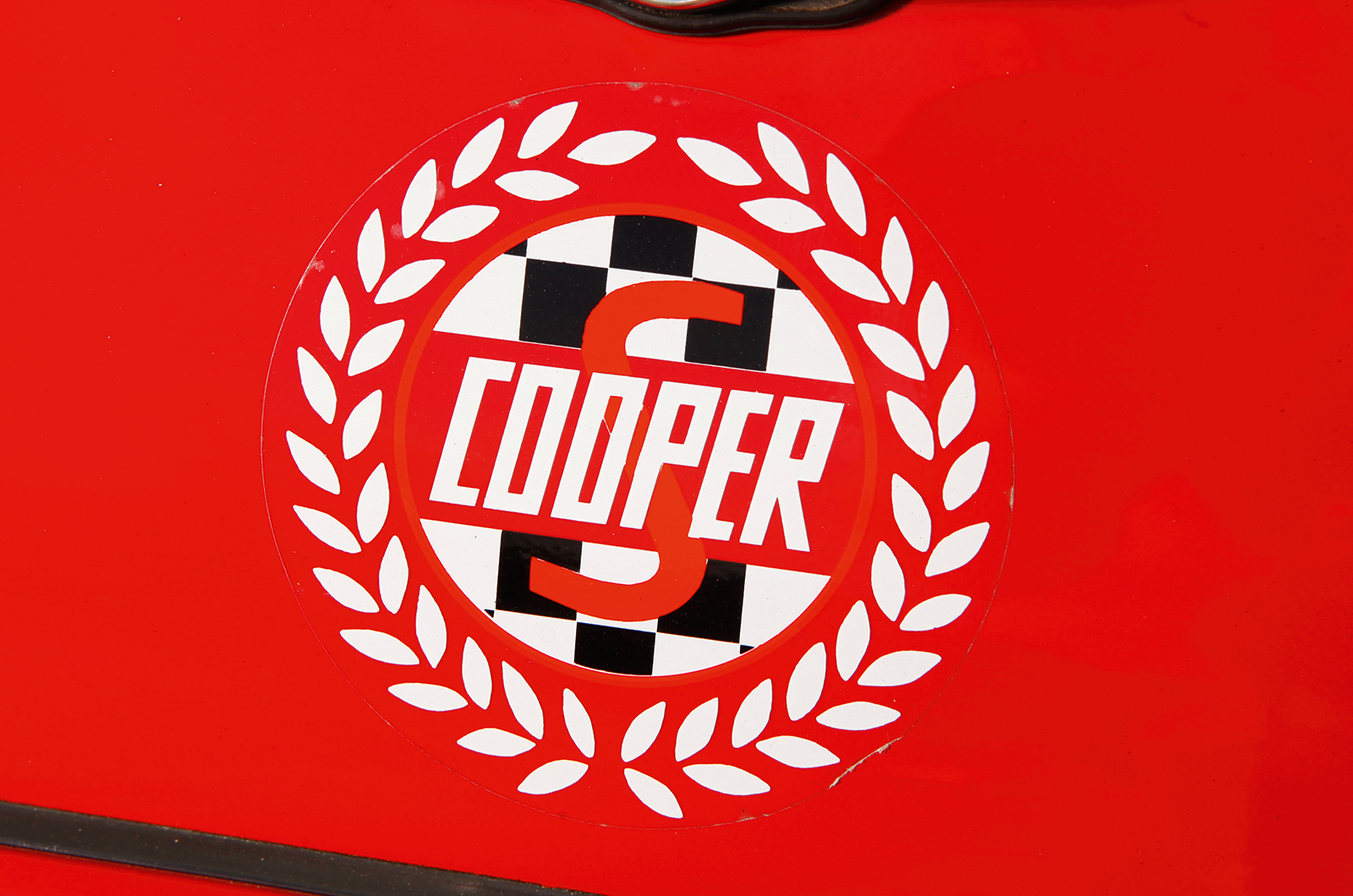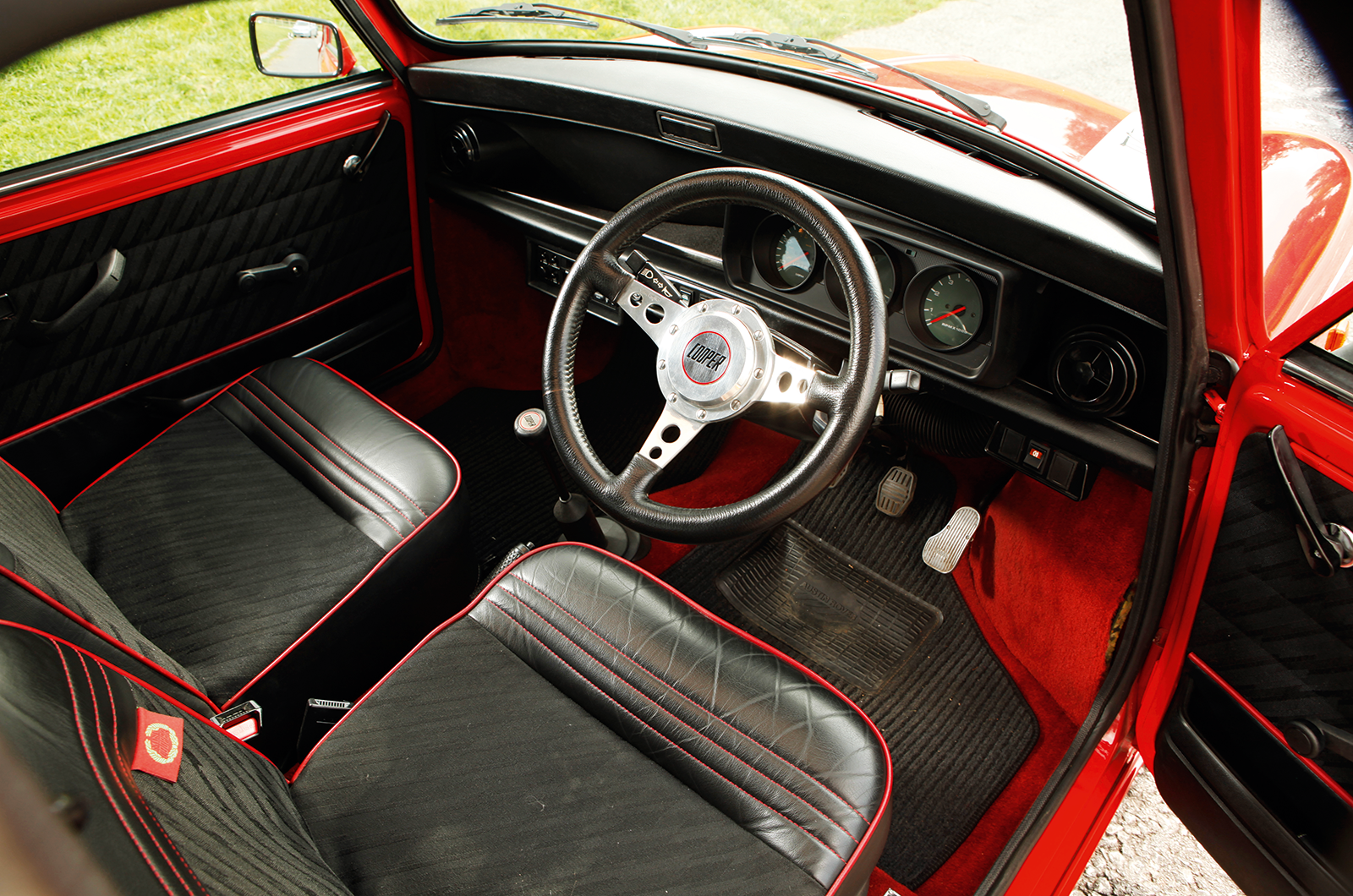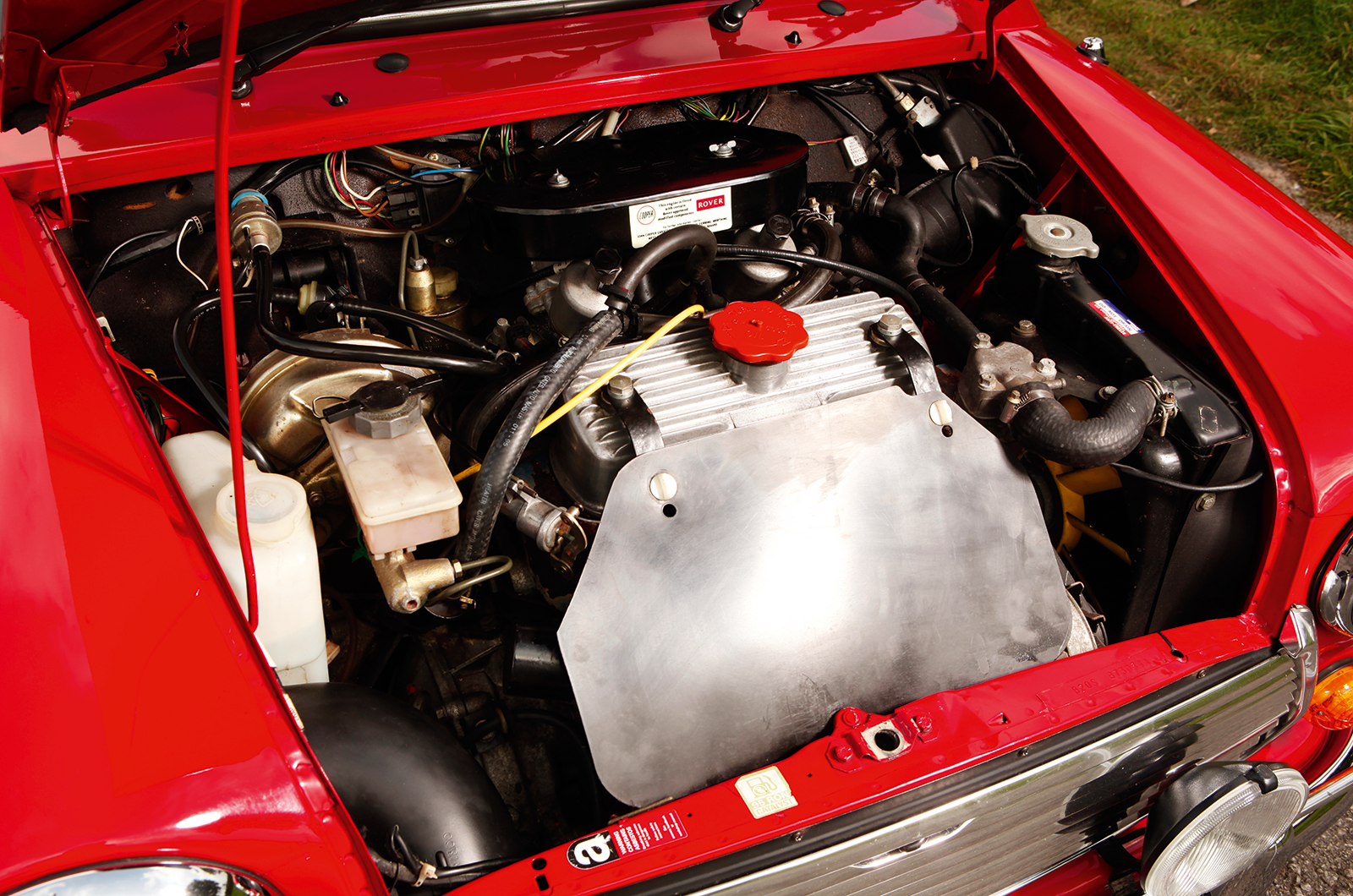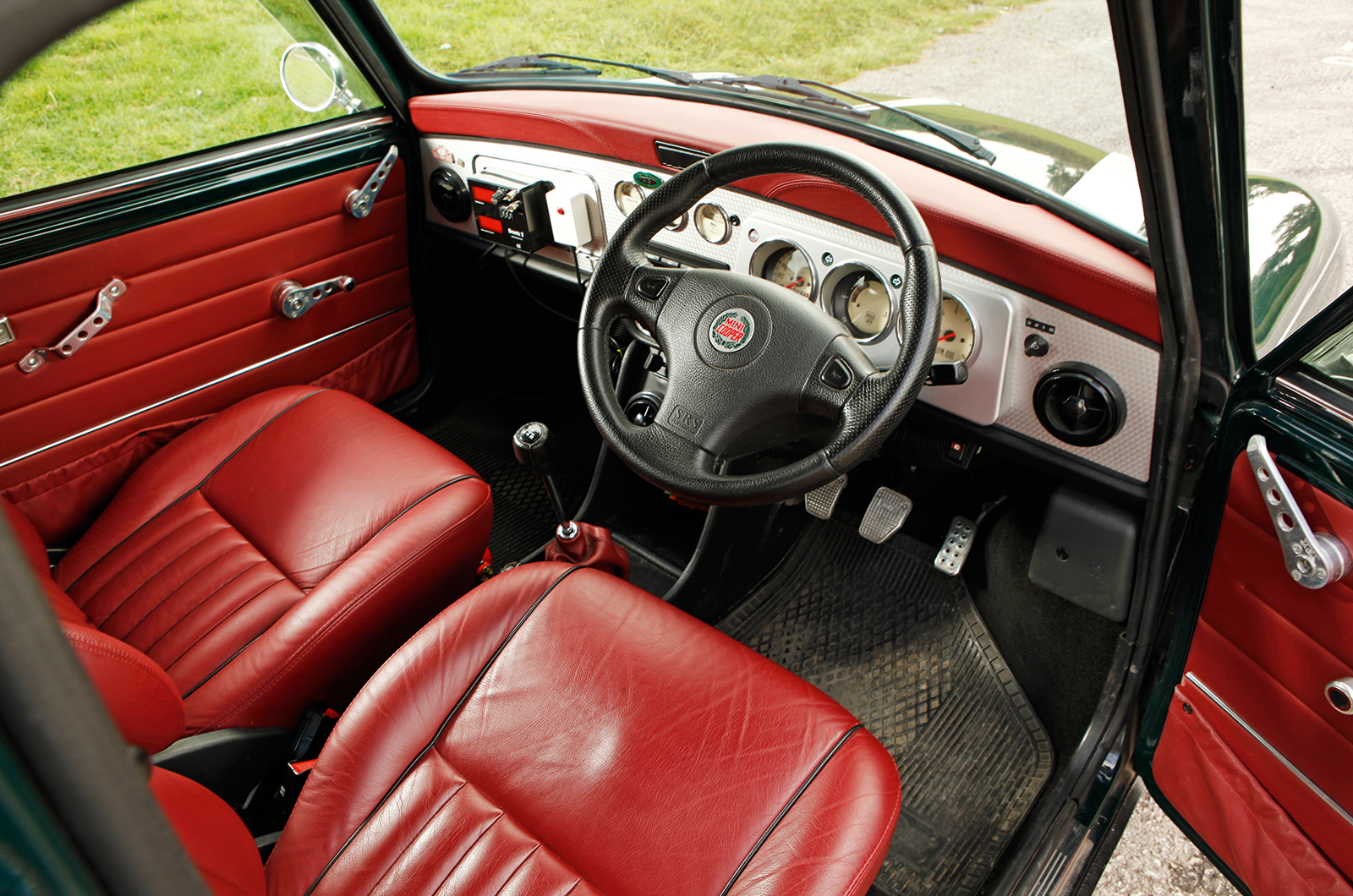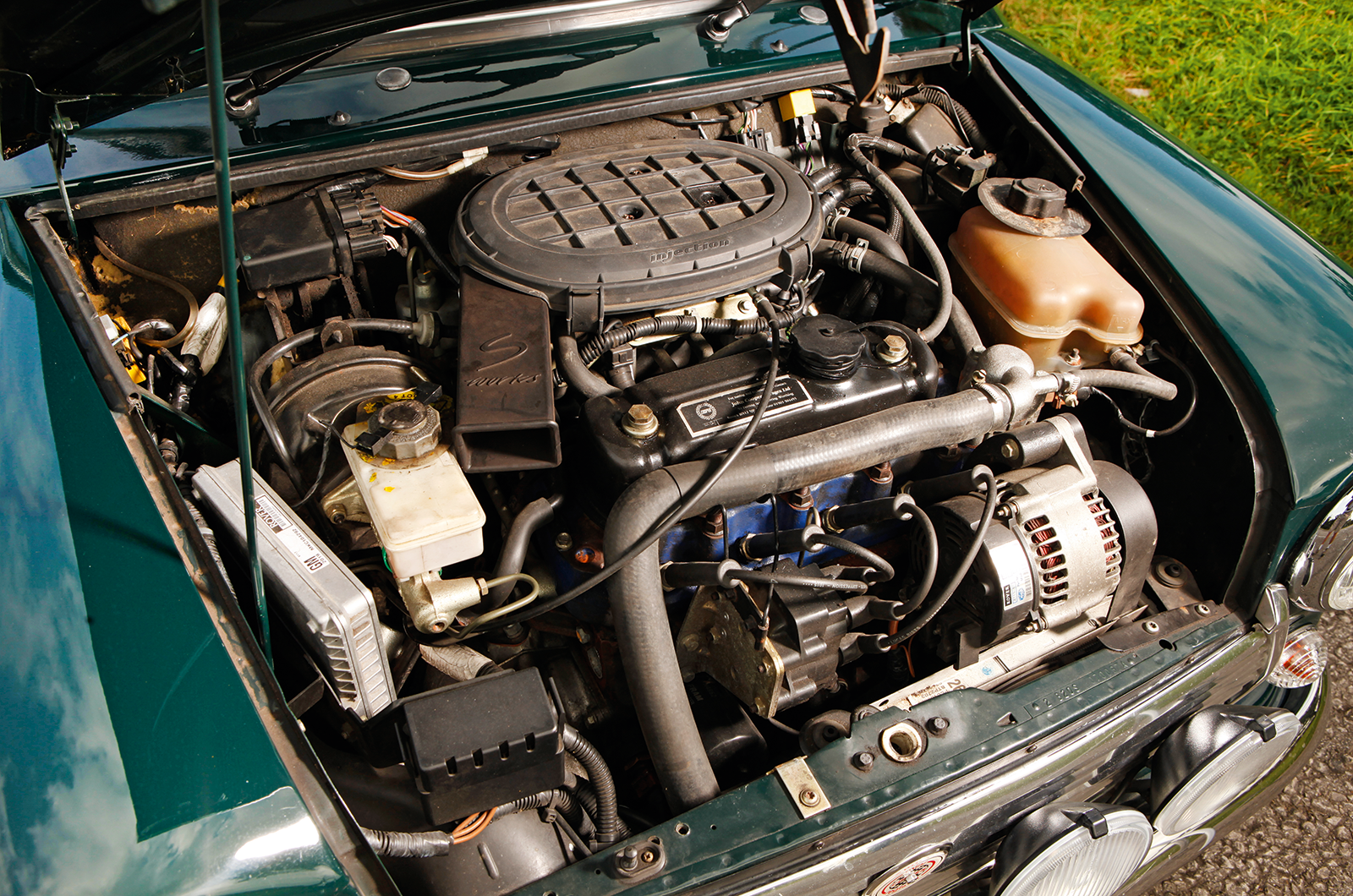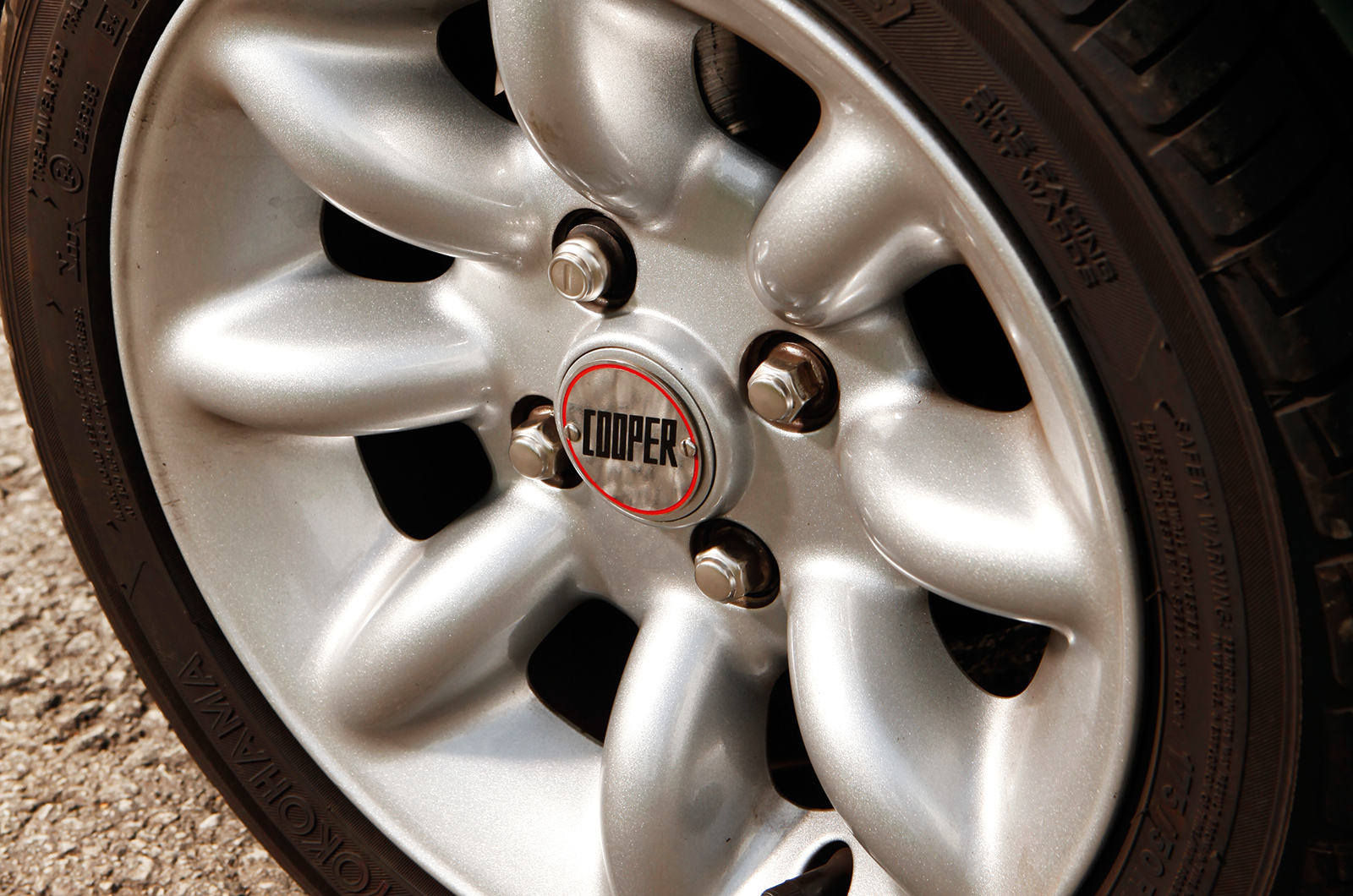The ERA featured an improved driving position, too, with a Connolly leather-trimmed interior and bespoke dash, wheel and seats to bolster the car’s sense of plush refinement – and, perhaps, to justify a price that trespassed onto hot-hatch territory.
Available through selected Rover dealers, the ERA tapped into Japan’s blossoming Mini romance – an affair that would not only keep the car in production but encourage Rover and John Cooper to resurrect their offspring.
Meetings between Longbridge and Cooper – who had developed a successful dealer-fitted twin-carb conversion for the Mini 1000 – led to the idea of fitting a lead-free, catalysed version of the MG Metro’s single-carb 1275cc A+ into the Mini.
The Mini ERA Turbo’s five-spoke alloy wheels
The development work was undertaken by Rover Special Products, and the reborn Cooper was launched in July 1990 as a ‘Commemorative’ (or ‘RSP’) limited edition of 1000 UK cars, plus a further 650 for Japan.
History would be repeated because these figures were not enough to quench demand, and the Commemorative model was replaced by the slightly de-specified ‘Mainstream’ Cooper, which became a permanent addition to the range.
The most obvious difference between the two is the loss of the John Cooper-signed bonnet stripes, the red leather steering wheel, sunroof and colour co-ordinated wheelarch trims for the 12in wheels.
Mini Coopers blend modern usability with old-school entertainment
Later in 1991, the Cooper lost its SU carb in favour of single-point fuel injection.
In 1996, the Cooper inherited the last of the Mini’s improvements, when the MkVI became the MkVII.
Notables included multi-point fuel injection, a front-mounted radiator, full-width dash, driver’s airbag and optional Tonka-esque 13in ‘Sportpack’ alloys.
Both single-point and multi-point injected Coopers would sire a host of limited-edition variants, before the end for the quick Mini came in 2000.
The Cooper name returned to the Mini line-up in the 1990s
Ricky O’Hara’s featured ERA Turbo is the third prototype – it went to Jack Knight for experimental engine and gearbox testing – and is the earliest-known survivor.
Modified by its previous owner, it is fitted with a high-boost 1293cc MED engine that boasts a charge-cooler, plus steel springs, upgraded brakes, a Jack Knight straight-cut gearbox, a KAD quickshift and limited-slip differential.
Inside, the ERA is as plush as it is ’80s – an impression reinforced by the grey leather trim, which is very ‘M&S slip-on loafer’.
The Mini Cooper’s interior remained resolutely old school
It currently produces 140bhp with 12psi of boost (170bhp is possible with 22psi), which represents a healthy increase over the factory’s 94bhp, and O’Hara advises that it should be driven hard.
Approaching 4000rpm, the ERA’s power delivery has all the subtle progression of Frank Spencer experiencing ‘a spot of bother’ with a bazooka.
Go for extended acceleration on the stiffer throttle and your eyes will widen when a front tyre snaps at a drain cover or a chunky road marking.
It should put you off, but it doesn’t – for by then you are already addicted to boost.
The Rover Cooper S-Pack’s 1275cc engine has a twin-carb set-up and a Janspeed top-end
The ERA is a surround-sound hoot.
Its turn-in is not as pure and true as its lesser-shod brethren, but in isolation the ERA negotiates a convincing truce between the argumentative demands of furious torque and unfussed straight-line acceleration.
On the over-run, the orchestra of shrieking straight-cut gears, sneezing dump-valve and screaming idler gear strikes up a disjointed, scratchy, psychedelic cacophony.
Anything that follows the ERA should be as disappointing as returning to work after a fortnight of sun, sea and shandy, yet Bob Needham’s 1991 RSP ‘S’ Pack is anything but.
The Mini John Cooper LE S Works from 1999 has an airbag
One of 78 conversions carried out by John Cooper Garages for the not-inconsiderable sum of £2900, the 80bhp Rover-supported Janspeed kit included a flowed cylinder head, sports exhaust system, twin HS2 carburettors and high-lift rockers, plus a 3.44:1 final-drive ratio (RSP 3.1:1), a damper/tyre handling pack, and a host of cosmetic flourishes and badges.
Janspeed’s top-end has transformed the A+.
It euphorically zings around the tacho emitting a cheeky, fruity exhaust parp.
Its Metro gearbox proves a revelation – changing positively, lightly and consistently from one ratio to the next without any four-lettered encouragement.
Just 25 Mini John Cooper LE Works cars were converted to ‘S’ spec
The 12in wheels don’t get distracted by surface imperfections, while corners are casually tossed into the past with Cooper ‘S’ zeal – plus the added benefit of less noise and a better ride.
It’s a very resolved blend of ‘S’ capability and 1275GT usability.
Peter Farley’s 1999 car is the 15th of only 25 LEs that were converted into S Pack spec by John Cooper Garages.
The interior and the 6J x 13in wheels are the obvious changes, hinting at the ‘boutique’ direction in which its big-bottomed successor would take the Mini name.
Multi-point fuel injection made its way into the Mini Cooper from 1996
Refinement is this car’s key quality.
The greater torque from the MPI engine allowed the use of a higher 2.76:1 final drive to make it a quieter cruiser – although the deep sports exhaust is far from shy and retiring.
A front-end pedant could moan about the wider wheels having a slightly detrimental effect on this, that and t’other – but the steering is lighter than that of the ERA and I suddenly find myself having daily runabout ideas.
After all, this Mini even has side-impact bars and an airbag.
The Mini John Cooper LE S Works has 6J x 13in wheels that give a purposeful look
A decision has to be made.
In truth, any of these wheeled elixirs would merrily tickle the most jaded of drivers, but with its ‘stop and go’ performance, unadulterated handling, roominess and 1960s décor – glazed with a glimmer of uncouth glee – it is the Cooper ‘S’ that edges it, and blows my bloody doors off.
Damnation! Talk about falling at the final hurdle.
Images: Tony Baker
Thanks to: the Mini Cooper Register; Curborough Sprint Course; Gerard Hughes
This feature was first in our February 2015 magazine; all information was correct at the date of original publication
Factfiles
Morris Mini Cooper MkI
- Sold/number built 1961-’64/24,860 (including Austins)
- Construction all-steel monocoque with subframes f/r
- Engine all-iron, overhead-valve 997cc ‘four’, twin SU HS2 carburettors
- Max power 55bhp @ 6000rpm
- Max torque 54lb ft @ 3600rpm
- Transmission four-speed, three-synchromesh manual, FWD
- Suspension independent, at front by unequal-length wishbones rear trailing arms; rubber cone springs, hydraulic telescopic dampers f/r
- Steering rack and pinion
- Brakes discs/drums
- Length 10ft ¼in (3054mm)
- Width 4ft 7½in (1410mm)
- Height 4ft 5in (1346mm)
- Wheelbase 6ft 8in (2032mm)
- Weight 1315lb (597kg)
- 0-60mph 17 secs
- Top speed 85mph
- Mpg 27-35
- Price new £679
Mini Cooper ‘S’ MkII
(where different to MkI Morris Mini Cooper)
- Sold/number built 1967-’70/6329 (including Austins)
- Engine 1275cc
- Max power 75bhp @ 5800rpm
- Max torque 80lb ft @ 3000rpm
- Transmission all-synchromesh post-Oct ’68
- Suspension interconnected Hydrolastic displacers f/r with rear helper coil springs
- Brakes discs/drums, with servo
- Weight 1435lb (651kg)
- 0-60mph 11 secs
- Top speed 97mph
- Mpg 28-34
- Price new £719
Mini 1275GT
(where different to MkI Morris Mini Cooper)
- Sold/number built 1969-’80/110,673
- Engine 1275cc, single SU HS4 carburettor
- Transmission four-speed all-synchro manual
- Max power 59bhp @ 5300rpm
- Max torque 67lb ft @ 2550rpm
- Suspension Hydrolastic pre-’71, rubber cone springs post-’71
- Length 10ft 4½in (3165mm)
- Weight 1488lb (675kg)
- 0-60mph 13.3 secs
- Top speed 90mph
- Mpg 31
- Price new £834
Mini ERA Turbo
(where different to MkI Morris Mini Cooper)
- Sold/number built 1989-’91/436
- Engine 1275cc A+, single SU HIF44 carburettor, Garrett T3 turbo
- Max power 94bhp @ 6130rpm
- Max torque 87lb ft @ 3600rpm
- Brakes vented front discs, four-pot calipers
- Length 10ft ½in (3061mm)
- Weight 1456lb (661kg)
- 0-60mph 7.5 secs
- Top speed 112mph
- Mpg 34
- Price new £11,950
Rover Cooper S-Pack
- Sold/number built 1990-’91/78 (out of 1650 RSPs)
- Engine 1275cc, twin SU HS2 carburettors, Janspeed top-end
- Max power 77bhp @ 6000rpm
- Max torque 78lb ft @ 3250rpm
- Weight 1556lb (706kg)
- 0-60mph 9.9 secs
- Top speed 100mph
- Mpg 35
- Price new £11,237 (£8337 RSP)
Mini John Cooper LE S Works
- Sold/number built 1999/25 (300 John Cooper LEs)
- Engine 1275cc, multi-point fuel injection
- Max power 90bhp @ 6000rpm
- Max torque 88lb ft @ 3000rpm
- Weight 1576lb (715kg)
- 0-60mph 8.9 secs
- Top speed 101mph
- Mpg 37
- Price new £12,495 (basic S Works)
Enjoy more of the world’s best classic car content every month when you subscribe to C&SC – get our latest deals here
READ MORE
25 classic superminis
The Amsterdam Job: the story of an epic classic Mini adver
60,000 miles around the world in Minis
Simon Charlesworth
Simon Charlesworth is a contributor to Classic & Sports Car
